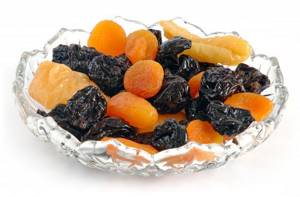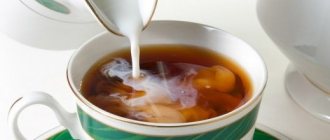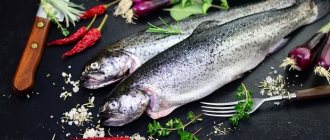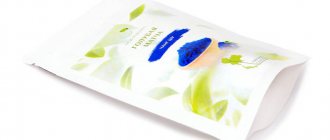Traditions of tea ceremonies in different countries
Japan, China, Taiwan and Vietnam are considered the most traditional countries, and the drink is drunk there without any additives or impurities. It is believed that only pure black or green tea allows you to experience the real taste and aroma. The culture is built in such a way that over the course of a lifetime you can try hundreds of shades of the drink and choose a few favorites for yourself. Among the flavorings, only natural ingredients are used, for example, jasmine or mint.
In India, sugar, milk or lemon are added to tea. For example, they can use masala tea, which is not considered a classic drink in the usual sense. The composition includes milk and spices, which makes the taste unique. In Turkey, star anise, ginger or allspice can be added to tea. Green tea, along with black tea, is served along with nuts and dried fruits, as well as oriental sweets. At the same time, usually only black tea is preferred, and it is quite strong.
In Arab countries, green tea is more often used, to which mint or sugar may be added. When the outside temperature is high, citrus juice and ice can be added. This allows you to feel significantly refreshed.
Tea has been drank in Europe for a long time, but the main custodian of traditions remains England, where drinking tea for five hours is considered mandatory. The British love to add sugar, milk and snack on all the sweets at this time.
In Russia, since time immemorial, tea was brewed for the whole family, drunk from saucers and snacked on lump sugar. Very often pies, bagels, as well as honey and jam were served on the table. We drank and drink tea while maintaining these traditions. For the first time, lemon was added to a drink in Russia back in the 19th century, and only then this tradition spread to other countries. We drank tea and always added various citrus fruits to it. Lemon in those days acted as a symbol of wealth.
What to drink tea with?
What to drink tea with?
No matter how much of a gourmet we consider ourselves to be, you can’t argue with genetic memory: no, no, yes, you’re tempted to eat oolong with delicious buns, and pu-erh with honey and jam. The British still drink strong black tea with sugar, milk and lemon - and nothing, they don’t frown. Different countries and different generations have their own tea drinking traditions. Maybe there are some things worth adopting? Let's delve into the question.
The Japanese, Chinese, Vietnamese and Taiwanese have similar traditions when it comes to tea: here it is customary to drink the drink in its pure form, without any “impurities”. In countries with ancient tea culture, the focus is on the aroma and taste of the infusion, which can have hundreds of shades. Here, if anything is added, it is only natural flavors: for example, jasmine or mint.
Indians are much more democratic in this regard: they add milk, sugar, and lemon to tea. Masala tea is a drink where tea is only guessed at, the rest is milk and spices. Turks and Iranians behave in a similar way with tea: they add allspice, star anise, ginger, cardamom; Nuts and dried fruits and oriental sweets are served with tea. And they drink mostly very strong black (red) tea - Indian or Ceylon.
In North Africa (Arab countries) they prefer green teas, to which they add mint and sometimes sugar. In hot weather, tea is mixed with citrus juice and ice to refresh.
In Europe, tea traditions are set by the British: their five-o'clock is as immutable a ritual as the changing of the guard at Buckingham Palace. We have already mentioned that in the UK they drink tea with anything: sugar, milk, sweets. In this way the British are similar to the Indians.
Rus' also had its own ceremonies: they set a samovar for the whole family, brewed strong black tea and drank from saucers, snacking on lump sugar, pies, bagels, jam and honey.
Actually, we are not far from our ancestors: in most families they drink tea with sugar, lemon and sweets. By the way, lemon is considered a purely Russian “invention”: they first started drinking tea this way here, in the 19th century, and only then in other countries. However, in the Middle East, citrus fruits are also often added to tea: oranges, lemons, grapefruits. But in our case, it’s not even a matter of taste, but the fact that lemon in those days was a sign of wealth, and it was served on every occasion (like sugar), showing its status.
So which combination is right?
Sugar softens the taste of strong black tea, and in this form it is healthier for the stomach, and also stimulates brain function. But it also absorbs valuable vitamin B1, and also “muffles” shades of taste and aroma - if the tea is really good. Let’s keep silent about the harm to teeth and figure. The same story with sweets (sweets, nougat, marmalade, jam): all of them do not allow you to fully experience the rich taste. If you are used to eating sweet tea, try alternating first: a sip of tea - a piece of sweets, trying to taste the taste. Gradually, you can replace sweets with dried fruits or honey, which are much healthier.
By the way, chocolate with tea is very good for brain function and blood pressure - but only bitter.
Honey is a harmless alternative to sugar: you can add it directly to tea or eat it as a drink. Honey helps to lose weight: it contains the hormone orexin, which starts metabolism and breaks down fats. It’s not for nothing that our grandmothers and mothers gave us tea with honey: it really helps with colds, increasing sweating. Honey is best absorbed with green tea or oolong tea, but it should be added to slightly cooled, not hot tea (40-50 degrees) - then the healing properties of honey will not be affected.
Often tea is drunk with cakes, pies and sandwiches. In this case, drink tea with flour instead of water or juice. It is difficult to do without carbohydrates, but remember: flour, like sweets, does not allow you to feel all the shades of tea taste and its healing effect. To prevent this from happening, drink more tea if you eat sandwiches or pies - this will help digest food that is difficult for the body and invigorate you. For the same reason, it is better to drink very strong tea with flour tea - red or aged pu-erh.
Milk, like sugar, softens strong tea and removes excess bitterness. But this can be avoided by proper brewing: do not add too much tea and do not steep it for longer than 2 minutes. Then the tea bouquet will not suffer, as is the case with milk (although much less than due to sweets).
The British and Asians—Mongolians and Indians—love to drink tea with milk, adding spices and spices to the mixture (masala tea). But here we are talking about another drink, so there is no particular point in “sniffing” the tea bouquet: it is drowned out by the spices.
If we ignore the taste, then milk in tea is more good than bad: it contains more than 100 useful substances, including 20 vitamins and easily digestible protein. In combination with tea, milk is also better absorbed than separately; it stimulates all body systems and strengthens them. The only negative is that milk reduces the tonic effect. To preserve all the benefits, add milk slightly warmed up (up to 40-60 degrees), and brew strong tea (green is also suitable).
Tea with fruit is drunk both for taste (natural flavoring) and for benefits. It works well in both cases: the fruits do not interrupt, but even enhance the taste of the tea and are really healthy, especially in their natural form. Moreover, the combination of taste and benefits is easy to regulate: dried fruits and jams are sweeter and tastier, but also less healthy. In this case, tea helps deliver fruit acids - citric, ascorbic, malic - to the necessary organs without irritating the mucous membranes. But don’t get carried away: if you add dried fruits directly to tea or eat too much of them, the taste and properties of the tea itself will suffer.
Tea with citrus fruits is a very healthy drink that quenches thirst, tones, and strengthens the body. Tea with lemon helps you escape the heat and keep you warm in the cold; the antioxidants in the composition help remove harmful substances in case of poisoning or hangover. But lemon has a rather negative effect on the taste of tea: the acid overpowers all other shades. At the same time, lemon does not reduce the nutritional or healing properties or even the strength of tea.
The spices of the tea help to open up, adding new notes and giving a very rich aroma. Most often, ginger, cumin, mint, star anise, and pepper are added, which stimulate blood circulation, help the brain and immunity, tone, and improve digestion. Ginger is especially useful, which in the east is used for literally everything. But it’s easy to overdo it with spices, and then the taste and aroma will be lost.
Sweet
To soften the taste of black tea, sugar is added. This allows you to achieve greater benefits for the stomach, and the tea also stimulates brain function. You can add to this list any sweets that, although they make drinking more enjoyable, do not allow you to enjoy the tea’s own taste. Try to alternate, that is, drink tea and only then snack on sweets. Sweets can be replaced with honey or dried fruits, but we’ll talk about that later.
Hot chocolate is one of the best sweets for every person, as it stimulates the brain and also blood pressure.
Sandwich
What else do you eat with tea? Sandwiches. This snack fits well into our everyday routine. Very often breakfast consists of tea and sandwiches. Various products are used to prepare this snack. Some people like a sandwich with sausage and herbs, others choose it with butter and cheese. There are people who prefer to eat such snacks only with red fish or caviar.
Spices
Regardless of what kind of tea you drink, adding spices to it will add new notes and rich aroma. The drink reveals its taste. Among all the additives, cumin, mint, pepper or star anise are most often used. They stimulate blood circulation, and also strengthen the immune system and improve digestion. Ginger is used to get rid of any diseases.
Thus, no matter what kind of tea you drink, green or black, you can add various sweets, fruits or spices to it to significantly improve the taste.
Healthy goodies - dried fruits
What do people who are on a diet eat with tea? Dried fruits. These are very useful products. Tea with prunes will be useful for those who suffer from kidney disease, as the fruit removes excess water and salt from the body. This dried fruit is also useful for rheumatism. In addition, it has a positive effect on the functioning of the digestive system, and also fills the body with vitamins A, B1, B2, C.

Dates are also delicious to eat with tea. This fruit contains various trace elements (potassium, sodium, zinc, etc.), as well as vitamins E, K and A. It is useful for hypertension and anemia, and has a positive effect on the functioning of the heart, kidneys and liver.
Dried apricots are rich in carotene and phosphorus. Good for the intestines and thyroid gland. This product goes well with tea. In addition, dried apricots are good for hair, vision and skin.
Raisins can also be eaten with tea. It contains potassium, sodium and phosphorus. Very good for the heart muscle. Positively affects the functioning of the nervous system.
Dried apples and pears were held in high esteem by our grandmothers. Believe me, these are very healthy products that go well with tea. They contain many vitamins: A, C, B2, E, as well as various microelements such as iodine, zinc, magnesium and iron. They have a positive effect on the functioning of the nervous, circulatory and urinary systems. Tea with dried apples and pears is useful for those suffering from colds.
Candies and oriental sweets
What do they eat with tea? Today we will discuss this topic in detail.
Let's start with sweets. Many people like to eat some delicacy with their tea. The first thing that comes to mind is, of course, candy. After all, this combination is considered ideal. Now there are many types of this delicacy. Let's list some:
Many believe that this habit began to spread thanks to the emptiness of the stomach of the Duchess of Bedford, Anne Maria Russell, which, as she approached 5 p.m., felt the natural hunger that we all felt. Therefore, the preparation of the tea table spread throughout England, and today, even in Brazil, there are hundreds of people who take this break to recharge their energy and improve their mood. That's why we have listed good experiences for you to innovate when it comes to table service and inviting your friends for that delicious tea.
- caramel;
- liqueur;
- truffles;
- waffle based;
- dairy;
- praline;
- iris;
- chocolate;
- licorice;
- fruit;
- nutty
- and others.
All these products differ in composition. They are prepared in different ways.
Some people choose oriental sweets. These delicacies are made according to recipes from Eastern countries. Turkish delight, nougat, kozinaki, sherbet and halva - all sweets go well with tea. As a rule, they are prepared using products such as honey, candied fruits, sesame seeds and nuts. The advantage of oriental sweets is that they are stored for a long time in warm climates.
Afternoon tea table
Of course, the traditional afternoon tea table has a classic, almost Provencal touch, imitating those wonderful meetings with princesses and queens that we see in films and TV series. However, it is possible to vary the tones as well as decorative items to make the table more personalized and different from what we usually see around us. It can follow a combination of pink and white, which brings a vintage vibe to the space, and then paint or add pastel shades, which also results in good harmony.
Types of tea
Let's start with what types of tea there are. It is classified by color, variety and country of growth. Ordinary consumers know these types of tea:
- black;
- green;
- red.
And:
- Ceylonese;
- Indian;
- Chinese;
- Georgian;
- Vietnamese and others.
There are also premium, first grade and low grade teas. Gourmets prefer a drink with additives (bergamrt oil, lemon balm, jasmine, etc.), more exotic oolong teas, pu-erh and others.
Contraindications for drinking tea
When consuming tea, as in any matter, you need to observe moderation. In large quantities, tea will not only not bring benefits, but can also cause harm. especially dangerous for children.
. You can give them tea, but rarely, preferably warm and not too strong. It is not the consumption of liquid as such that is harmful for a child; such restrictions do not apply to water; the diuretic effect of tea is harmful; it additionally puts a strain on the child’s kidneys and heart.
It is not recommended to abuse tea for pregnant women
.
If you can’t completely eliminate tea, it is better to choose varieties with a lower caffeine content, since caffeine can negatively affect the development of the fetus. It is also better for people with stomach ulcers
and
high acidity of gastric juice
.
People with diagnosed hypertension
and
atherosclerosis
should not drink a lot of red and strong tea.
Drinking tea right before bed is also not a good idea if you still want to fall asleep. Aromatic substances and caffeine only excite the body
, which can lead to insomnia. For sick people, doctors usually recommend warm, generous drinks, but it is better that this drink is not tea if the person is taking antipyretics. It's all about the diuretic effect again: the more often a person goes to the toilet, the lower the effectiveness of antipyretic drugs will be.
Cakes
What do sweet lovers eat with tea? Cakes. Nowadays they produce a wide variety of piece confectionery products. The weight of such a dessert ranges from seventeen to one hundred grams. There are different types of cakes:
- puff pastry;
- biscuits;
- nut;
- sand;
- custard;
- almond;
- air;
- tiny;
- whipped.
Some of these are decorated with fruits and berries. There are cakes sprinkled with chocolate or nuts.
Green tea is the second most consumed beverage in the world, second only to water. Green tea has its leaves steamed and then dried. So it has different properties. This prevents oxidation of the ingredients and preserves nutrients. There is a diet called the green tea diet, which uses the drink as a booster for weight loss every day.
What are the benefits of drinking green tea?
Let's check out the benefits of green tea and how this diet works. Its daily consumption brings many benefits due to its high amount of polyphenols. They contain powerful antioxidant properties that help the body's immune system by protecting cells from disease-causing free radicals, reports a study at the University of Maryland Medical Center in the United States. Thus, it is a great option to replace coffee in the morning to have less caffeine concentration, as well as throughout the day.
Pizza
What else do you eat with tea? Pizza. This Italian pie has gained popularity among people from different countries. It is made with sausage, chicken or seafood. Regardless of what ingredients the pizza is made from, a piece of the aromatic Italian product will be an excellent addition to green or This combination is perfect for breakfast.
However, chamomile tea does the exact opposite as it relieves the symptoms and pain of these diseases. That is, there are no side effects for those who use this type of drink. And it also has no contraindications, except for pregnant women who should not drink tea during the pregnancy period. Although chamomile is not listed as an abortifacient tea, it is better to be safe than sorry and stop using it during this time.
Chamomile can be purchased at any natural food store, in virtual stores in capsule form, for example, for people who do not have much time to waste and cannot stop making tea during the day. Teas will vary in price depending on their manufacturer, but they are not expensive products.










